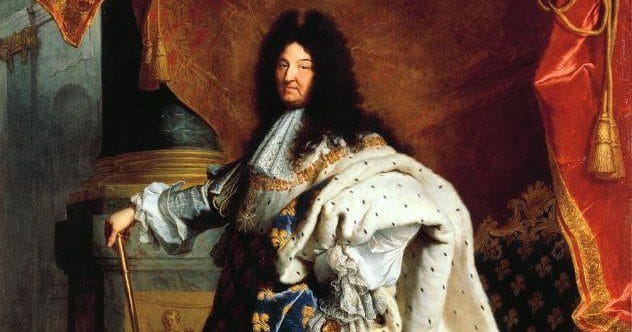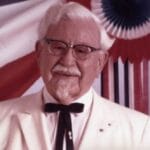Introduction
When you picture French royalty, King Louis XIV often steals the spotlight. Known as the Sun King, his reign was a golden age for France, filled with opulence and influence that echoed across Europe. We’ve all heard about Versailles and his long rule, but there’s a treasure trove of truly bizarre and fascinating details about his life that often get skipped in history class. Get ready to discover a side of Louis XIV you never knew existed!
10. Louisiana’s Royal Roots
Did you know that a whole U.S. state owes its name to the Sun King? In 1682, French explorer Rene-Robert Cavelier laid claim to a vast territory in North America for France. He named it “La Louisiane” in direct honor of King Louis XIV. This huge area remained a French colony for decades.
Interestingly, it was later handed over to Spain in 1762 through the Treaty of Fontainebleau. However, Spanish influence didn’t drastically change the region, and it eventually returned to French hands before being sold to the United States in the famous Louisiana Purchase of 1803. Today, Louisiana’s vibrant culture, especially in cities like New Orleans and Baton Rouge, still shows strong traces of its French beginnings, all thanks to a king across the ocean.
9. A King’s Heart… Eaten?
This one is truly bizarre! After Louis XIV passed away in 1715, his heart was mummified. Over a century later, in 1848, an eccentric English scientist named William Buckland encountered this royal relic. Buckland was a geologist and paleontologist known for his unusual habit of tasting specimens he studied – yes, you read that right!
The heart was in the possession of the Harcourt family, who had acquired it after the French Revolution when many royal belongings were looted. During a gathering, Buckland, true to his peculiar nature, decided to take a bite out of the mummified heart of the great Sun King. Surprisingly, this strange act didn’t seem to harm his reputation, and he continued his career as a respected scientist. Talk about an acquired taste!
8. The King’s Many Loves
Louis XIV was quite the charmer and had a reputation as a serial womanizer. Throughout his long reign, he had numerous mistresses. Among the most famous were Madame de Montespan and the Duchess of La Vallière, but his romantic escapades didn’t stop there.
By the time his life drew to a close, Louis XIV had acknowledged at least nine illegitimate children. These children weren’t hidden away; instead, they were given titles and important positions within the French court. The king even commissioned official portraits of his illegitimate sons, displaying them alongside those of his legitimate heirs. These children played notable roles in the French monarchy, both during and after their father’s lifetime.
7. History’s Longest Reigning Monarch
Louis XIV holds an impressive record: he was the longest-reigning monarch in European history, and arguably world history, ruling France for an incredible 72 years and 110 days. He ascended to the throne in 1643 and his reign lasted until his death in 1715.
During this extensive period, France saw immense prosperity and underwent significant transformation, cementing its status as a leading European power. To put his reign into perspective, Queen Elizabeth II, known for her remarkably long service, reigned for 70 years, falling just short of Louis XIV’s record. His lengthy rule left an indelible mark on French history.
6. A King from Childhood
Imagine becoming king when you’re just learning to read! Louis XIV ascended to the French throne at the tender age of four, following the death of his father, Louis XIII, in 1643. This made him one of the youngest monarchs ever to take power.
Naturally, his early years on the throne were guided by regents, most notably his mother, Anne of Austria, and Cardinal Mazarin, who ruled in his name. It wasn’t until 1661, after Mazarin’s death, that Louis XIV, then 22, declared he would rule without a chief minister and took full control of the government. He went on to centralize power, establish a formidable standing army, and oversee the expansion of French territories, becoming one of Europe’s most powerful rulers.
5. More Than a King: A Military Strategist
While often remembered for his lavish court and the Palace of Versailles, Louis XIV was also a formidable military leader. During his reign, France was frequently at war, and the king often personally led his armies to numerous significant victories.
One of his early triumphs was the Battle of Rocroi in 1643, a decisive victory that marked a turning point in the Thirty Years’ War. He also successfully defended French interests against Spain in the War of Devolution and defeated the Dutch in the Franco-Dutch War. Beyond his battlefield successes, Louis XIV strategically expanded French territory through alliances and conquests, all while ensuring the French economy remained robust. His military and political acumen helped France become a dominant force in 17th-century Europe.
4. The Dancing King
Louis XIV wasn’t just a powerful ruler and military mind; he was also a skilled artist, particularly a gifted ballet dancer! This might seem like a surprising contrast to his kingly duties, but his passion for dance was genuine and profound.
His love for ballet blossomed in his teenage years. A defining moment was his performance as Apollo, the sun god, in the Ballet de la Nuit (The Ballet of the Night) at age 15. This role famously earned him the nickname the “Sun King,” a title that would define his reign. Beyond formal performances, he was an adept dancer in social settings. The French court frequently hosted long evenings of dance, and it was considered a great honor to share a dance with the king himself.
3. The Mystery of the Man in the Iron Mask
The life of Louis XIV is shrouded in many intrigues, but one of the most persistent and captivating is the story of his supposed twin brother, allegedly hidden away and forced to wear an iron mask. This tale has inspired countless books and films.
The most popular version of the legend claims that shortly after Louis XIV’s birth, a second baby boy was born. Fearing that twin brothers could create a succession crisis and threaten the stability of the kingdom, King Louis XIII supposedly ordered one twin to be raised in secret, his face forever concealed by an iron mask to hide his identity. For years, rumors about this imprisoned twin circulated, with many believing the mysterious masked prisoner was indeed Louis’s long-lost brother. While there’s no concrete historical evidence proving a familial link to Louis XIV, the enigma of the Man in the Iron Mask continues to fascinate people centuries later.
2. The Visionary Behind Versailles
The magnificent Palace of Versailles, one of the world’s most stunning architectural achievements, was commissioned by Louis XIV. What began as a modest hunting lodge was transformed under his direction into the largest and most splendid palace in Europe, a symbol of his absolute power and France’s cultural eminence.
Versailles was meticulously designed to be a grand display of the king’s authority and a luxurious residence for the royal family and the French court. It was lavishly adorned with priceless artwork, exquisite tapestries, and opulent furniture, all reflecting the wealth and prestige of the French monarchy. The palace also boasted an incredible array of formal gardens, ornate fountains, and sprawling grounds. Today, the Palace of Versailles remains an iconic global landmark, drawing millions of visitors, a lasting testament to Louis XIV’s grand vision.
1. Architect of France’s Artistic Golden Age
Louis XIV was one of history’s most influential patrons of the arts. His reign ushered in a golden age for French culture, with arts flourishing like never before. Many of the most iconic works of French art, literature, and music were produced during this period, largely thanks to his support.
The Sun King championed a wide array of artists, including painters, sculptors, architects, and musicians. He famously patronized legendary figures like the playwright Molière and the tragedian Jean Racine. More than just funding them, he actively encouraged artists to explore new frontiers in their disciplines, leading to groundbreaking and innovative works. Louis XIV also invested significantly in nurturing young talent by supporting art academies throughout France. His efforts aimed to elevate France to rival Italy as the epicenter of the art world, successfully setting the stage for centuries of French artistic excellence.
Conclusion
Louis XIV was far more complex than the gilded image often portrayed. Beyond the grandeur of Versailles and the length of his reign, his life was filled with peculiar events, passionate pursuits, and decisions that shaped not only France but also corners of the world far beyond its borders. These lesser-known facts paint a more complete and intriguing picture of the Sun King, revealing a multifaceted ruler whose legacy is as strange as it is splendid.
What do you think is the strangest fact about Louis XIV? Share your thoughts in the comments below!










